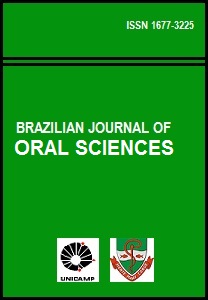Abstract
Aim: To evaluate the mechanical behavior of reciprocating endodontic files, comparing nickeltitanium (NiTi) and stainless steel 316L (St.St. 316L) as manufacturing material for such instruments. Methods: A three-dimensional finite element model was designed for this study. The simplified instrument model geometry was created on commercial CAD/CAM software. Real strain stress curves of St.St. 316L and NiTi were used in the analysis. Non-linear static analysis was performed to simulate the instrument inside root canal at an angle of 45° in the apical portion, and subjected to torsion of 0.3 N.cm. Results: Non-linear NiTi material showed super elasticity and high functionality in such applications. Very high levels of stress appeared in the file at 3 mm from the tip close to yield point. Conclusions: St. St. 316L is not suitable for manufacturing reciprocating instruments. Modeling of the instrument with equivalent circular cross-sectional area did not affect results quality. Reciprocating instruments have short lifespan, thus manufacturers recommend using one file per tooth. Reciprocating instruments are recommended for less experienced dentist.
This work is licensed under a Creative Commons Attribution 4.0 International License.
Copyright (c) 2015 Mohamed I. El-Anwar, Ayman O. Mandorah, Salah A. Yousief, Tarek A. Soliman, Tarek M. Abd El-Wahab
Downloads
Download data is not yet available.

